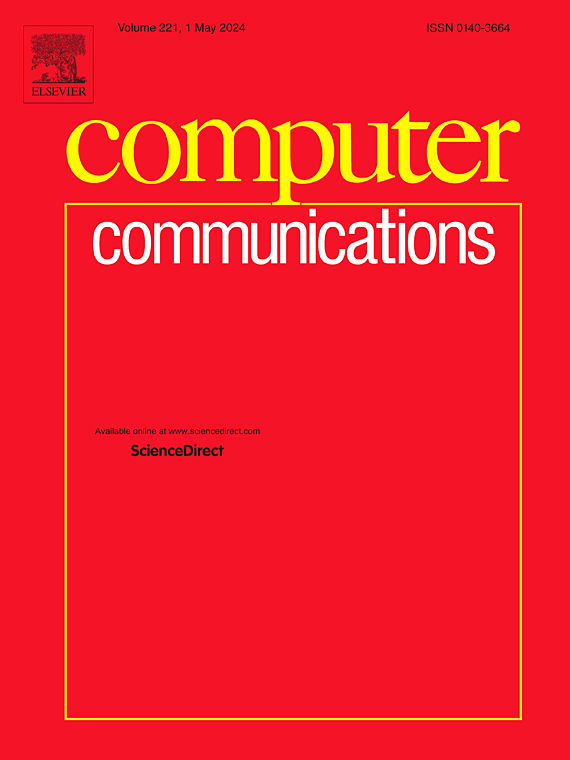复杂约束下异构无人机群的分布式协同任务分配
IF 4.5
3区 计算机科学
Q1 COMPUTER SCIENCE, INFORMATION SYSTEMS
引用次数: 0
摘要
在考虑关键任务时间、通信距离和任务资源需求约束的情况下,研究了异构无人机群执行侦察打击任务的动态任务分配问题。该系统面临的主要挑战是对任务区域内所有未知目标进行侦察和打击,这涉及到对无人机状态变化、任务信息以及与相邻节点的可变通信的管理。克服当前基于共识的启发式任务分配方法的局限性也很重要,这些方法由于在分布式计算框架中被困在局部最优中而经常导致次优解决方案。为了解决这些问题,首先建立了一种新的异构无人机群任务分配模型,以最大化任务效益和最小化路径规划成本。其次,提出了一种基于两阶段共识的群体绑定算法(CBGBA),使无人机能够在动态环境下对任务分配结果达成共识。在任务包含阶段,我们通过优化任务延迟和序列收益为新增加的任务创建可行的时隙,从而防止在关键任务时间约束下出现局部最优问题。在共识过程阶段,我们采用块信息共享(BIS)策略来建立局部网络,解决由于通信范围限制而产生的共识冲突。此外,我们提出了一种改进的共识原则,促进分布式异构无人机之间的动态任务分配,满足任务资源需求。最后,仿真结果验证了所提算法的有效性和优越性。此外,与基于共识的协同算法(CBSA)相比,CBGBA的性能提高了14.2%。本文章由计算机程序翻译,如有差异,请以英文原文为准。
Distributed cooperative task allocation for heterogeneous UAV swarms under complex constraints
This paper investigates the dynamic task allocation problem for a heterogeneous UAV swarm conducting reconnaissance and strike (RAS) tasks while considering constraints on critical task time, communication range, and task resource requirements. The main challenge is to reconnaissance and strike all unknown targets within the mission area, which involves managing the UAV's changing states, task information, and variable communication with neighboring nodes. It is also important to overcome the limitations of current consensus-based heuristic task allocation approaches, which often lead to sub-optimal solutions due to being trapped in a local optimum within a distributed computing framework. To solve these problems, a novel heterogeneous UAV swarm task allocation model is developed first to maximize task benefits and minimize path planning costs. Second, we propose a two-phase consensus-based group bundling algorithm (CBGBA), which enables UAVs to reach consensus on task allocation results in a dynamic environment. In the task inclusion phase, we create feasible time slots for newly added tasks by optimizing task delay and sequence revenue, thus preventing the occurrence local optima problems under the critical task time constraint. In the consensus procedure phase, we employ a block-information-sharing (BIS) strategy to establish local networks, resolving consensus conflicts due to communication range constraints. Additionally, we propose an improved consensus principle that facilitates dynamic task allocation among distributed heterogeneous UAVs, meeting task resource requirements. Finally, the simulation results demonstrate the effectiveness and superiority of our proposed algorithm. Furthermore, CBGBA exhibits a performance enhancement of up to 14.2 % compared to the consensus-based synergy algorithm (CBSA).
求助全文
通过发布文献求助,成功后即可免费获取论文全文。
去求助
来源期刊

Computer Communications
工程技术-电信学
CiteScore
14.10
自引率
5.00%
发文量
397
审稿时长
66 days
期刊介绍:
Computer and Communications networks are key infrastructures of the information society with high socio-economic value as they contribute to the correct operations of many critical services (from healthcare to finance and transportation). Internet is the core of today''s computer-communication infrastructures. This has transformed the Internet, from a robust network for data transfer between computers, to a global, content-rich, communication and information system where contents are increasingly generated by the users, and distributed according to human social relations. Next-generation network technologies, architectures and protocols are therefore required to overcome the limitations of the legacy Internet and add new capabilities and services. The future Internet should be ubiquitous, secure, resilient, and closer to human communication paradigms.
Computer Communications is a peer-reviewed international journal that publishes high-quality scientific articles (both theory and practice) and survey papers covering all aspects of future computer communication networks (on all layers, except the physical layer), with a special attention to the evolution of the Internet architecture, protocols, services, and applications.
 求助内容:
求助内容: 应助结果提醒方式:
应助结果提醒方式:


